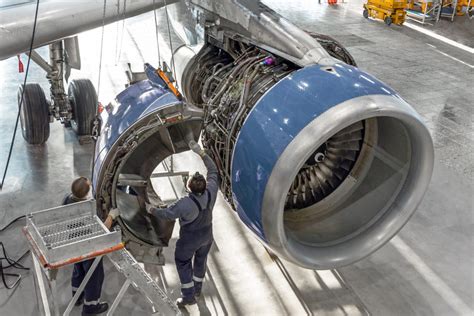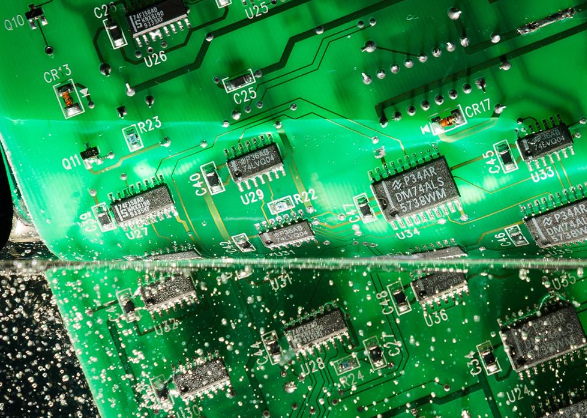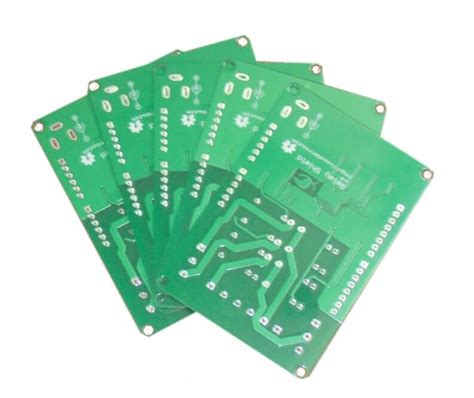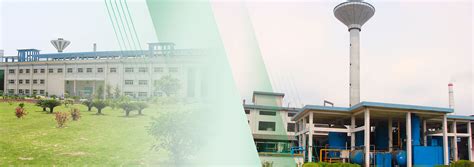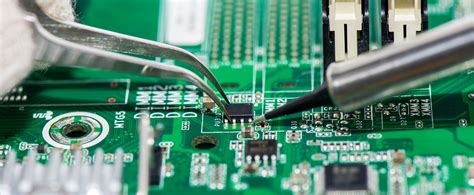Revolutionizing Aerospace: The Future of PCB Assembly
Key Takeaways
As advancements in aerospace PCB assembly (PCBA) technology continue to evolve, several key takeaways emerge that illustrate the transformative power of these developments within the industry. One significant takeaway is the integration of innovative techniques that facilitate quicker and more efficient pcb assembly processes, ultimately leading to an increase in overall productivity. Additionally, the use of advanced materials science plays a critical role in enhancing the reliability of PCBA components. These materials are specifically engineered to withstand the extreme conditions typical in aerospace applications, ensuring that each component performs optimally under stress. Furthermore, innovations in PCB design have led to more compact and lightweight solutions, which are particularly crucial given the emphasis on reducing weight within aviation systems. Such design enhancements not only improve performance but also contribute to greater fuel efficiency. Another vital aspect is the commitment to sustainable practices in distributing resources, minimizing waste during aerospace PCB manufacturing processes while maintaining high standards of quality and performance. Collectively, these takeaways highlight a dynamic landscape where continuous improvements in pcb assembly, materials selection, and design strategies pave the way for a sustainable and high-performing future in aerospace applications.
Introduction to Aerospace PCB Assembly: A New Era of Innovation
The landscape of aerospace technology is undergoing a remarkable transformation, largely fueled by advancements in PCB assembly (PCBA). As the demand for more reliable and efficient aerospace components grows, so does the need for innovative pcb assembly techniques that cater specifically to aviation requirements. This new era of innovation emphasizes the integration of cutting-edge materials and precise manufacturing processes that enhance the overall performance and reliability of aerospace PCBs.
For instance, the implementation of automated assembly lines and state-of-the-art testing methods has significantly improved production efficiency while minimizing errors. These advancements not only expedite the manufacturing timeline but also ensure that every component adheres to stringent industry standards. In addition, adopting modular designs allows for easier upgrades and maintenance, fostering a more sustainable approach to aerospace technology.
To better illustrate this evolution, consider the following table outlining some key advancements in aerospace PCB assembly:
| Advancement | Description |
|---|---|
| High-Density Interconnects | Enables compact designs that accommodate more functionality. |
| Enhanced Thermal Management | Supports reliable operation in extreme temperature conditions. |
| Advanced Surface Finishes | Improves solderability and corrosion resistance. |
| Flexible PCBs | Adaptable designs suited for unique aerospace configurations. |
The innovations in pcb assembly not only enhance performance but also contribute towards achieving sustainability goals in aerospace manufacturing. By embracing these changes, companies can look forward to a future where reliability and efficiency are at the forefront of aerospace development, ultimately leading to safer and more sustainable air travel.
Key Technological Advancements in PCB Assembly for Aerospace Applications
The evolution of PCB assembly (PCBA) in the aerospace sector has been marked by several groundbreaking advancements that significantly enhance the performance and reliability of aerospace applications. One of the key innovations is the development of high-density interconnects (HDI), which allow for greater functionality within a smaller footprint. This miniaturization is critical in modern aircraft, where every gram counts towards fuel efficiency and overall performance. Furthermore, advancements in automated assembly techniques have drastically improved production speed and accuracy, ensuring that PCBA can meet stringent aerospace standards while minimizing lead times.
The introduction of blended materials—combining traditional materials with cutting-edge composites—has also played a vital role in enhancing the reliability of PCBs in harsh environments typical of aerospace applications. These materials offer superior thermal management and resistance to vibrations, which are imperative for components operating at high altitudes and varying temperatures. Alongside these innovations, flexible PCB designs now enable more efficient integration into complex systems, accommodating intricate layouts that traditional rigid boards cannot achieve.
Moreover, developments in surface mount technology (SMT) have transformed how components are placed on PCBs, reducing the overall size while increasing component density without compromising reliability or performance. This transformation is particularly advantageous for aircraft manufacturers looking to improve systems like avionics or flight control systems.
In conclusion, continuous enhancement in PCB assembly (PCBA) methodologies is paving the way for revolutionary changes within the aerospace industry. These technological strides not only mean better reliability and efficiency but also contribute to a more sustainable future for air travel through reduced weight and improved energy consumption.
The Role of Materials Science in Enhancing Aerospace PCB Reliability
Materials science plays a pivotal role in the pcb assembly processes used in the aerospace industry. The need for high reliability and durability in aerospace applications mandates the use of cutting-edge materials that can withstand extreme conditions. Engineers are increasingly focusing on advanced composites, polymer materials, and metal alloys to enhance the performance of printed circuit board assemblies (PCBA). These materials not only improve thermal management but also reduce weight, which is crucial for aerospace applications where every gram counts. Furthermore, innovative adhesives and coatings are being developed to increase resistance to moisture and other environmental factors that can lead to failure.
“Investing in research and development of new materials is not just beneficial; it’s essential for maintaining safety standards in aerospace,” says industry expert Dr. Emily Tran.
By leveraging new findings in nanotechnology, manufacturers are able to push the boundaries of what is possible, enhancing reliability while promoting sustainability through more eco-friendly manufacturing practices. As a result, there is a shift towards using lead-free solder and recyclable materials that align with global environmental standards. As these innovations continue to evolve, they not only promise enhanced performance but also pave the way for more sustainable practices within the aerospace sector’s pcb assembly operations. With consistent progress in material science, the future for reliable aerospace PCBA looks incredibly promising, setting new benchmarks for safety and efficiency across aviation technologies.
Innovations in PCB Design for Improved Performance in Aviation
The evolution of PCB assembly in the aerospace sector has introduced numerous innovations that are critically enhancing performance and reliability. One significant development is the integration of advanced materials that not only offer improved thermal management but also reduce weight—an essential factor in aviation. By employing high-frequency laminates and thermally conductive substrates, manufacturers are optimizing signal integrity while minimizing signal loss, which is crucial for stringent aerospace applications. Furthermore, the utilization of 3D printing techniques in PCBA offers the capability to create complex geometries that cater specifically to space-limited environments within aircraft systems.
Moreover, innovative design practices, such as Design for Manufacturing (DFM) and Design for Testability (DFT), enhance manufacturability and facilitate easier testing processes during production. These practices ensure that assembled circuit boards maintain their functionality under extreme conditions encountered during flights. As trends like miniaturization continue to shape the landscape, innovations are emphasizing increased functionality within smaller form factors, leading to lighter and more efficient aircraft systems. All these advancements signify a transformative leap in aerospace PCB assembly, paving the way for a more reliable and efficient aviation industry poised for future challenges.
Sustainable Practices in Aerospace PCB Manufacturing
The future of pcb assembly in the aerospace sector hinges significantly on the adoption of sustainable practices that not only enhance production efficiency but also prioritize environmental responsibility. The integration of eco-friendly materials and processes into pcba manufacturing has become a pivotal trend, as manufacturers aim to reduce waste and energy consumption while maintaining the high reliability required for aerospace applications. For instance, the use of lead-free solder and recyclable substrates has shown promising results in minimizing toxic emissions during production. Moreover, innovations such as automated assembly processes minimize human error and decrease resource usage, further promoting sustainability. Optimization techniques, including Design for Manufacturing (DfM), ensure that the pcb assembly process is streamlined, which leads to reduced material usage without compromising performance. Additionally, advancements in closed-loop systems for waste management allow companies to recycle byproducts into new products, thereby supporting a circular economy within the aerospace industry. Emphasizing these sustainable practices not only aligns with global efforts towards a greener future but also enhances the reliability and overall performance of aerospace electronic components, fundamentally transforming how we approach aerospace PCB manufacturing today.
The Impact of Miniaturization on Aerospace Electronics
The trend of miniaturization has significantly influenced the landscape of aerospace electronics, particularly in the realm of PCB assembly. As aircraft and spacecraft evolve towards more advanced technologies, the components that make up their electronics must also become smaller, lighter, and more efficient. This shift is where PCBA comes into play. By utilizing smaller circuit boards, manufacturers can optimize space on aircraft without compromising on performance. Additionally, advancements in soldering techniques and component placement have further enhanced the capabilities of aerospace PCB assembly, allowing for higher density designs that can still withstand extreme environmental conditions encountered during flight.
The pursuit of miniaturized components doesn’t just improve space efficiency; it also contributes to increased reliability and performance. Engineers often face challenges related to thermal management and signal integrity in smaller designs, which necessitates innovative solutions within PCB assembly processes. Furthermore, as weight reduction has become a critical factor in aviation efficiency—directly impacting fuel consumption and emissions—miniaturized electronics have pivotal roles to play.
Through an integrated approach that focuses on advanced materials and cutting-edge fabrication techniques, the aerospace industry is now better equipped to meet these demands. As a result, the development trajectory aligns closely with goals for sustainability while pushing the frontiers of aerospace technology forward.
Future Trends: What Lies Ahead for Aerospace PCB Assembly
As the aerospace industry continues to evolve, pcb assembly technologies are positioned at the forefront of innovation. One significant trend is the increased integration of smart technologies and automated processes in pcba that enhance production efficiency and precision. The incorporation of artificial intelligence (AI) and machine learning can streamline various stages of pcb assembly, from design to manufacturing. Additionally, advancements in materials science are leading to the development of lighter and more durable substrates capable of withstanding extreme temperatures and other harsh conditions typical in aerospace environments. This not only improves reliability but also contributes to the overall sustainability goals of the industry. Another critical trend is miniaturization, which allows for more compact electronic systems without compromising performance. As aircraft designs shift toward more environmentally friendly models, these evolving techniques in pcb assembly will play a crucial role in fostering innovation while adhering to stricter regulatory standards. The future of aerospace will rely heavily on these advancements, ensuring that pcba remains a pivotal element in achieving both operational excellence and sustainable growth.
Case Studies: Success Stories in Aerospace PCB Implementation
In the evolving landscape of aerospace, numerous organizations have successfully integrated PCB assembly innovations, highlighting the transformative potential of PCBA technologies in aerospace applications. One notable case is the collaboration between a leading aircraft manufacturer and a specialized PCBA vendor that implemented advanced circuit board assembly processes. This partnership focused on enhancing the durability and performance of electronic systems used in cutting-edge aircraft. By utilizing lightweight, high-reliability materials, they successfully reduced overall system weight by 15%, significantly improving fuel efficiency. Another exemplary case involves a satellite development project that incorporated aerospace PCB assembly techniques. The project utilized flexible PCBs to create compact, multifunctional devices capable of withstanding extreme conditions during launch and operation in space. This approach not only allowed for higher integration levels but also ensured exceptional reliability, ultimately leading to successful mission outcomes. These cases emphasize that through strategic collaborations and innovative PCB assembly practices, the aerospace industry can achieve remarkable advancements in both performance and sustainability. As organizations continue to explore such successful implementations, the future of aerospace PCBA looks increasingly promising, driven by these real-world success stories.
Conclusion
In summary, the advancements in PCB assembly technology are not merely incremental; they represent a transformative shift in the aerospace sector. As industries pursue greater efficiency and sustainability, pcba techniques are evolving to meet these demands. Key innovations in materials and design are enabling manufacturers to create circuits that boast enhanced durability and performance. For instance, the use of advanced substrates allows for better thermal management, which is crucial for aerospace applications where extreme conditions are commonplace. Furthermore, the emphasis on miniaturization leads to lighter components that still deliver high functionality, ultimately contributing to fuel efficiency and reduced emissions in aviation. The integration of sustainable practices within PCB assembly processes not only aligns with global environmental goals but also positions businesses at the forefront of technological progress. Overall, the future of aerospace pcb assembly holds promise for continued advances that support both operational excellence and a sustainable future.
FAQs
What is aerospace PCB assembly?
Aerospace PCB assembly refers to the specialized process of fabricating and assembling printed circuit boards (PCBs) designed for aerospace applications. This involves using high-quality materials and precise manufacturing techniques to ensure reliability and performance in challenging environments.
Why is reliability important in aerospace PCBA?
Reliability is critical in aerospace PCBA because any failure can have serious consequences, affecting safety and performance. The use of advanced materials and innovative assembly techniques helps to enhance the durability and longevity of the components used in aviation systems.
What are some recent advancements in PCB assembly for aerospace?
Recent advancements include enhanced pcb assembly processes that utilize automation, miniaturization, and improved materials. These technologies contribute to lighter, more efficient designs that meet the rigorous demands of modern aircraft.
How do materials science innovations affect aerospace PCBs?
Innovations in materials science enhance the thermal stability, weight reduction, and overall durability of aerospace pcba applications. Materials developed for resisting extreme conditions contribute significantly to the reliability needed for flying components.
Can sustainable practices be integrated into PCB manufacturing for aerospace?
Yes, sustainable practices are increasingly being included in PCB manufacturing processes. These practices focus on reducing waste, using eco-friendly materials, and optimizing energy consumption during production, aligning with industry trends toward sustainability.

